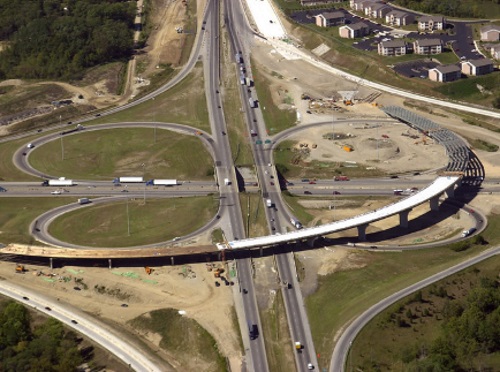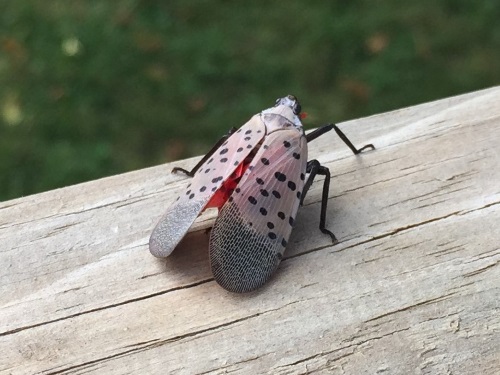FEDERAL ACTION
AASHTO Lauds Passage of Bipartisan Infrastructure Bill – AASHTO News Release
Fuel Efficiency, Electric Vehicle Mandates on the Horizon – AASHTO Journal
Booker Reintroduces Sweeping Environmental Justice Bill – Senator Cory Booker (Media release)
COVID-19
More workers are returning to the office. The pandemic-era commute might be changed forever. – Washington Post
Governor mandates vaccinations for transit workers as New York’s Covid cases surge – CNBC
NEPA
Revived Trump reforms in infrastructure bill could be freight-project windfall – American Shipper
INFRASTRUCTURE RESILIENCE AND SUSTAINABILITY
Pete Buttigieg And Michael Regan On What The Infrastructure Deal Does For The Climate – NPR’s All Things Considered
Climate in the infrastructure bill: A substantial investment in resilience. – New York Times
AIR QUALITY
New Mexico to impose new rules on vehicle emissions, aims to curb greenhouse gas – Carlsbad Current-Argus
Chicago Bus Shelters Monitor Air Quality – ITS International
Old and new solutions pave way to net-zero emissions farming, studies show – Mongabay
ENVIRONMENTAL JUSTICE
Governors aim to reduce racial disparities in traffic enforcement, safety – WTOP Radio
Cut in infrastructure money for communities hurt by highways disappoints advocates – NBC News
NATURAL RESOURCES
AASHTO Suggests Changes to Section 401 of Clean Water Act – AASHTO Journal
19 AGs to EPA: Roll back Trump’s clean-water rule ASAP – Reuters
The Darker Side of Tree-Planting Pledges – CityLab
Governor DeWine Announces $5 Million in H2Ohio Grants for Ohio River Basin Wetland Projects – Office of the Governor, State of Ohio (Media release)
CULTURAL RESOURCES
How Cleveland’s ‘Guardians of Traffic’ Made the Big Leagues – CityLab
HEALTH AND HUMAN ENVIRONMENT/ACTIVE TRANSPORTATION
Moving Caltrans Into The Future Of Active Transportation – ITE Talks Transportation (Podcast)
Drivers must now move over when passing people walking and on bikes – NJ.com
After voted ‘Most Dangerous City for Driving,’ Dallas embraces Vision Zero goal to eliminate fatal crashes – Spectrum News 1
Here’s how e-scooter unicorn Bird plans to use geofencing tech to protect pedestrians – Silicon Canals
Transit Leaders Praise Innovative On-Demand Programs – Government Technology
Agency of Transportation Awards $3.3 Million in Bicycle and Pedestrian Grants – Vermont Agency of Transportation (Media release)
Hawaii DOT & Partners Launch 12th Annual Statewide Pedestrian Safety Month – Hawaii DOT (Media Release)
TRB RESOURCES/ANNOUNCEMENTS
Racial Equity Addendum to Critical Issues in Transportation – TRB
TRB Webinar: LED Roadway Lighting’s Effect on Driver Sleep Health and Alertness – TRB
Environmental Resilience of Transportation Infrastructure Should Be Assessed for All Federally Funded Projects, Says New Report – National Academies of Sciences, Engineering, and Medicine (Media release)
FEDERAL REGISTER NOTICES
Notice of Public Meetings Regarding ‘‘Waters of the United States’’; Establishment of a Public Docket; Request for Recommendations – Corps of Engineers and EPA (Notice; announcement of public meeting dates and solicitation of pre-proposal feedback)
Effluent Limitations Guidelines and Standards for the Steam Electric Power Generating Point Source Category. – EPA (Notice of rulemaking initiative)
Public Hearing for Revised 2023 and Later Model Year Light-Duty Vehicle Greenhouse Gas Emissions Standards – EPA (Notification of public hearing)
FY 2021 Competitive Funding Opportunity: Passenger Ferry Grant Program – FTA (Notice of funding opportunity)
Notice of Intent To Prepare a Supplemental Environmental Impact Statement for the Coastal Plain Oil and Gas Leasing Program, Alaska – Bureau of Land Management (Notice of intent)
Marine Mammals; Incidental Take During Specified Activities; North Slope, Alaska – Fish and Wildlife Service (Final rule)
Alaska Region Supplement to Forest Service Manual 2720: Special Uses; Outfitting and Guiding Permit for Strictly Point-To-Point Commercial Transportation To, From, and Within the Mendenhall Glacier Visitor Center Subunit of the Mendenhall Glacier Recreation Area – Forest Service (Extension of comment period)
Notice of Availability of a Draft Environmental Impact Statement for the Proposed Lake Ontario National Marine Sanctuary; Announcement of Public Meetings – NOAA (Notice of virtual public meetings; correction)
Wyoming Regulatory Program – Office of Surface Mining Reclamation and Enforcement (Proposed rule; opening of public comment period and opportunity for public hearing on proposed amendment)



